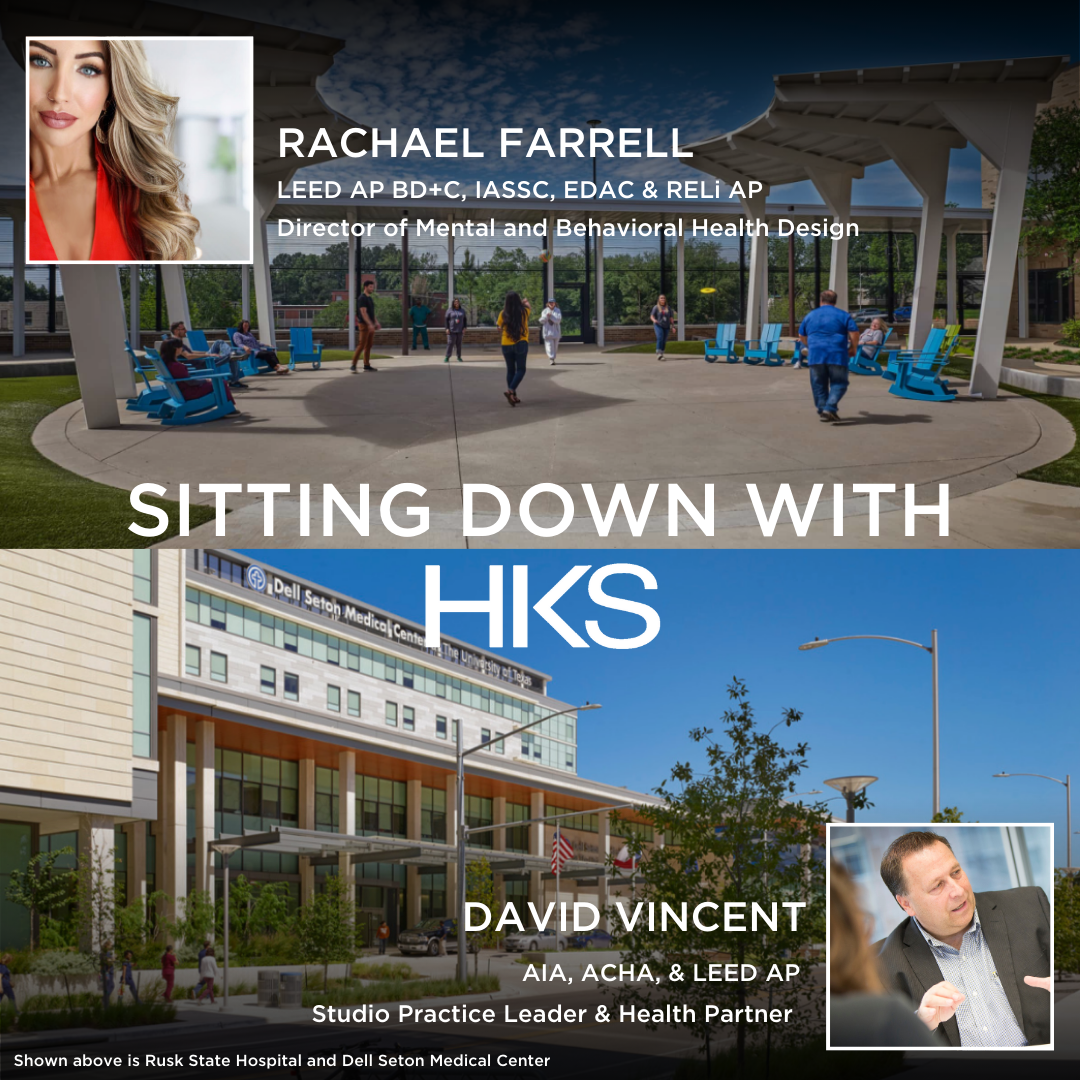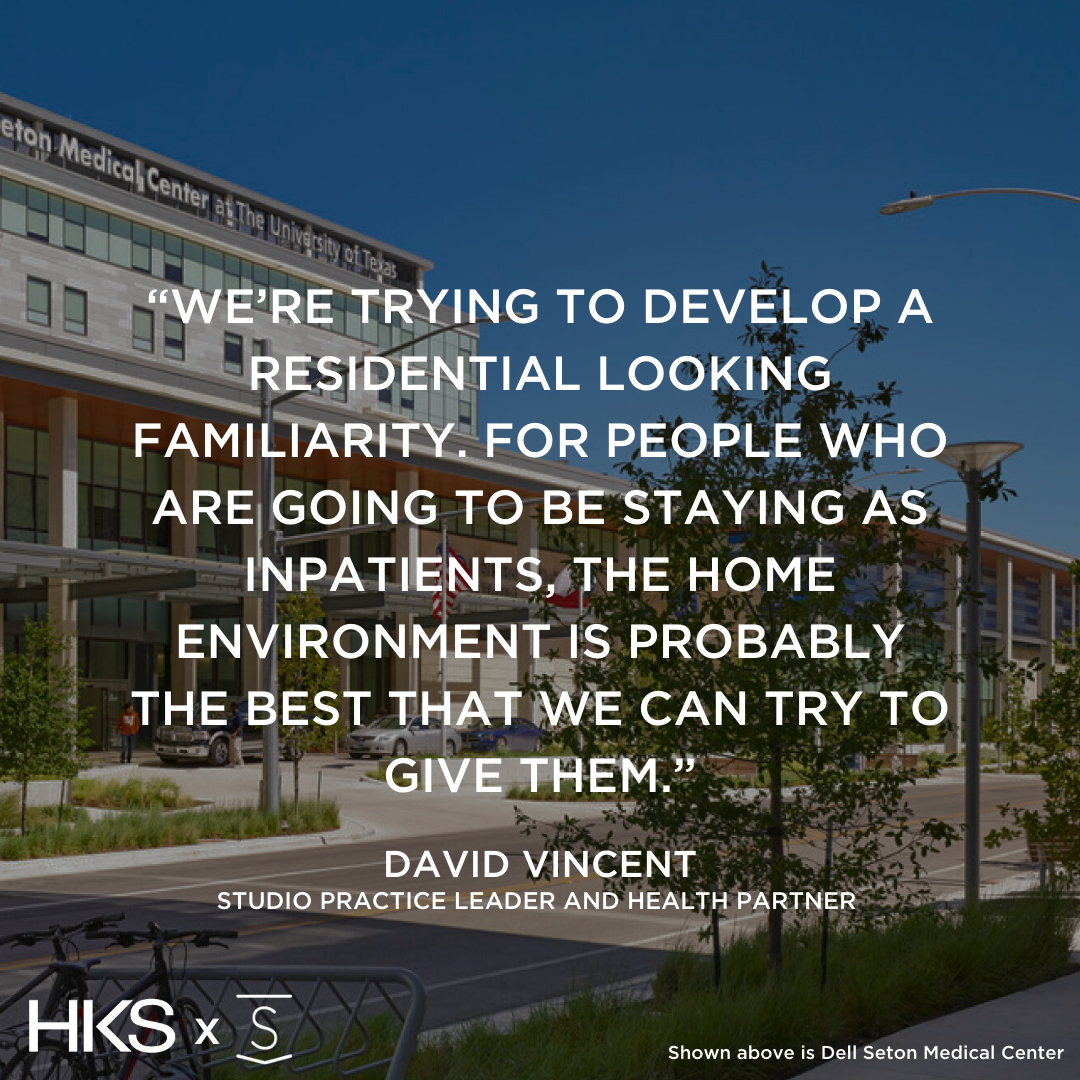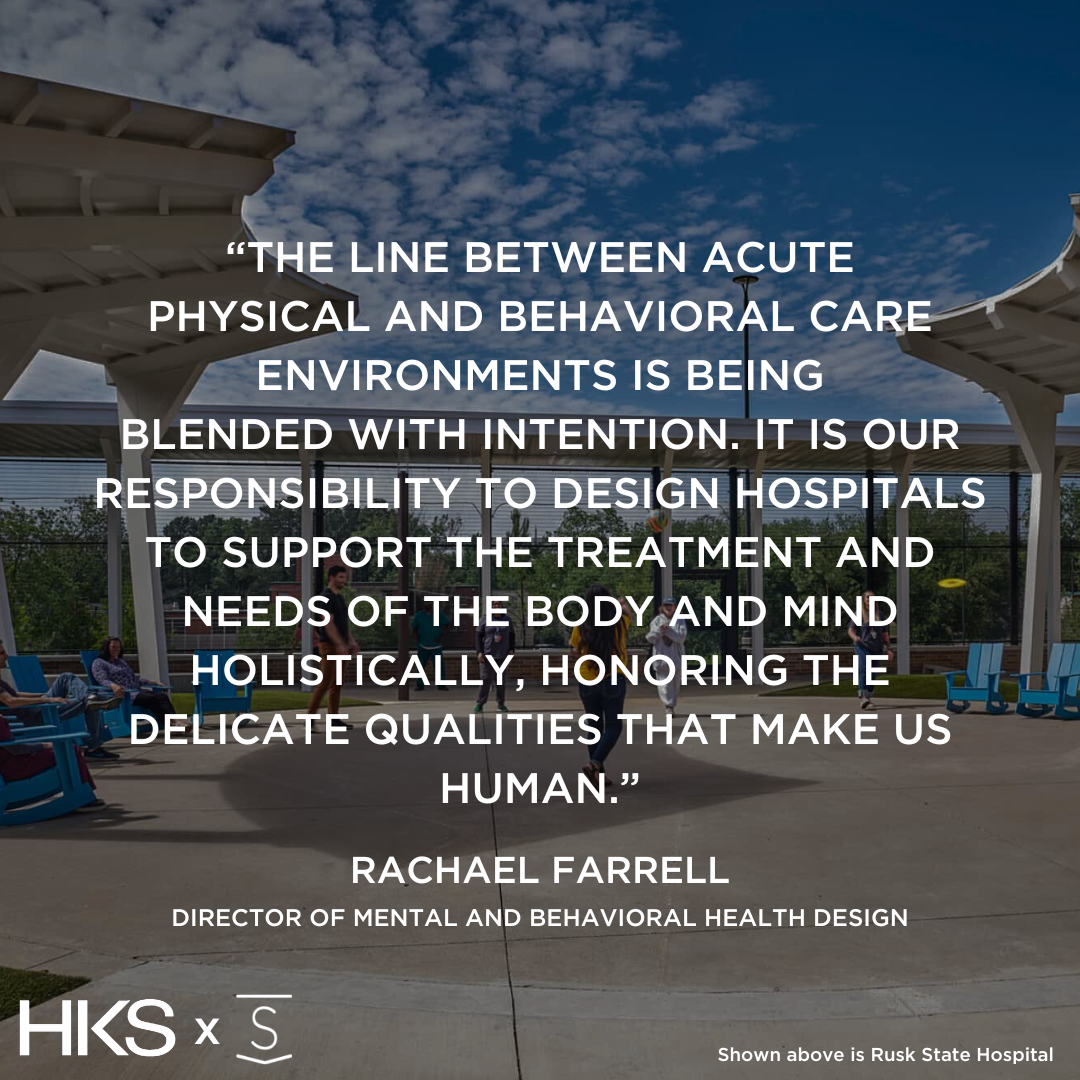The Future of Healthcare Design: Behavioral and Beyond

We’ve been in this industry for a while, so we know a decent amount. But times change and trends come and go, which means those out in the field are the ones with their fingers truly on the pulse. In serving healthcare designers, one of our top priorities is being sure we never fall behind when it comes to new practices and ideas.
SHIELD has tons of trusted partners (and their innovation is all off the charts). First up for our chats is HKS. Their mental and behavioral health team is consistently looking to optimize spaces for both patients and caregivers. Speaking with David Vincent and Rachael Farrell; we asked about what pains the industry, what gaps need to be filled and opened up about how SHIELD helps to meet those needs.
Creating Truly Safe Spaces
As defined by the American Medical Association, behavioral health refers to mental health and substance use disorders, life stressors and crises, and stress related physical symptoms. What once was seen as a separate part of the medical field is quickly becoming the standard in terms of patient care and design.
“The line between acute physical and behavioral care environments is being blended with intention," said Rachael Farrell, director of mental and behavioral health design. "It is our responsibility to design hospitals to support the treatment and needs of the body and mind holistically, honoring the delicate qualities that make us human."
Any healthcare facility wants their patients to feel safe and secure but behavioral faces challenges due to patients often being in a state of crisis when they arrive. In these situations, keeping individuals comfortable has a direct effect on their safety.
Behavioral spaces should be ones that facilitate healing and can offer respite inside of a space that feels more like a home than any kind of institution. In the past, this hasn't always been the case but behavioral health professionals today are pushing to create environments that lead patients towards independence and encouragement when opting into therapies.
In fact, behavioral facilities are becoming the blueprint for many other specialties due to the intense focus on patient comfort and safety.

“We’re trying to develop a residential looking familiarity,” said David Vincent, a studio practice leader and health partner. “For people who are going to be staying as inpatients, the home environment is probably the best we can try to give them."
The ultimate question designers are trying to answer is this: how do we create a hospital that doesn't feel like a hospital? Here at SHIELD our answer is not only creating products that last and look beautiful, but transforming them when need be.
As talked about in our last blog surrounding laminate vs solid surface, we learned that laminate has pretty terrible lasting power on its own. However, when encapsulating solid surface, it can offer a more "homey" feel with the staying power hospitals deserve. We know we can't always keep our products the same, so we go with the flow of changing design.
Prefab is the Secret Weapon
An architect's priority is staying on top of their projects, but they are also incredibly busy, which can make integration into the product development process difficult. For Vincent, working with a firm that will take the reins when necessary allows for a more convenient process in full.
For many designers, there is a balance between what products a company offers and how easy it will be to procure the products and make changes to the design.
“It’s a double edged sword because we really would like to be involved in the production and the design system,” said Vincent. “But we struggle to find the time because our schedules are extremely constrained.”
Standard versus custom is a question that can plague designers, but it doesn't have to be complicated. At SHIELD, we create both prefab custom products as well as a standard line. If what you want is a fully custom design, not only can we take you through the process, once your product is finished it will be uniquely yours and can be re-created again and again.

If going up against competitors is a priority, having your own custom line is certainly one way to make your facility stand out.
Prefab also allows clients to expand their scope with minimal complications. With the ease of replication, creating multiples of the same product becomes a seamless process.
“Our design philosophy is founded in active listening and co-creation. We want to support the intentions and heartbeat of our clients by pulling for insight and offering experience at the appropriate times throughout the design phase," said Farrell. "When presenting a process or product that is new to a practice, having someone on the team that can be the liason between the design and the trade partners is helpful to delineate the macro and micro details. This is where I feel collaborative processes like Design Assist really shine."
Convenience for both the client and the architect is not the only factor manufacturers are having to take into consideration. As costs continue to rise with escalation and inflation, it becomes more and more difficult to sell a client on a product that will be more expensive.
However, value of a product can push beyond the cost barrier. If a bedside table is more expensive at first, but will last a lifetime, that purchase will ultimately save you money.
“To me, it all comes down to the value proposition,” said Vincent. “If we can convey to the client that they are getting other problems solved with this product, I'm certainly fine with trying to sell that value.”
"To me, it all comes down to the value proposition. If we can convey to the client that they are getting other problems solved with this product, i'm certainly fine with trying to sell that value."
Looking To The Future
When looking down the road at what healthcare design will look like in the future, it seems there are a few pillars that will be strongly prioritized.
- Residential, comfortable design
- Cost/value analysis
- Functionality with aesthetics
- Convenient design process
As we’ve seen, behavioral health is becoming the go-to for medical design practices with its focus on comfortability for the patient, specifically when they will be having a long stay. With this in mind, creating a residential, warm and inviting environment while keeping the space functional seems to be a hole that will need to be filled.
“Patients presenting in crisis at behavioral health facilities arrive in a heightened sense of vulnerability,” said Farrell. "As stewards of the built environment, looking for opportunities to extend comfort, safety and support to them through the design of the facility is our responsibility."
While healthcare should always be patient focused, in the past it has been easy to create facilities for less and worry about the mental and physical toll design can take on patients later. Designers now are taking a stance that patient care should also include an encouraging physical environment. Here at Shield, we are more than ready to take on that challenge.
Do you have a design project that you think would be well-suited for acrylic solid surface?
Contact Shield to learn more about our custom design services or visit our products page for more information.
